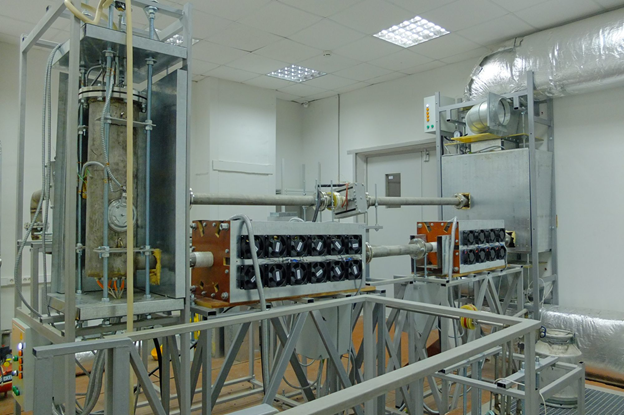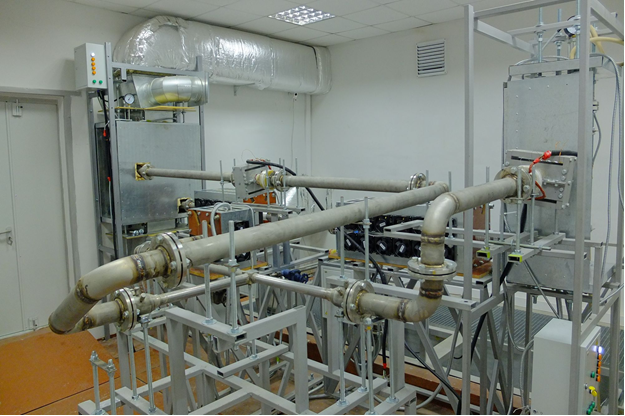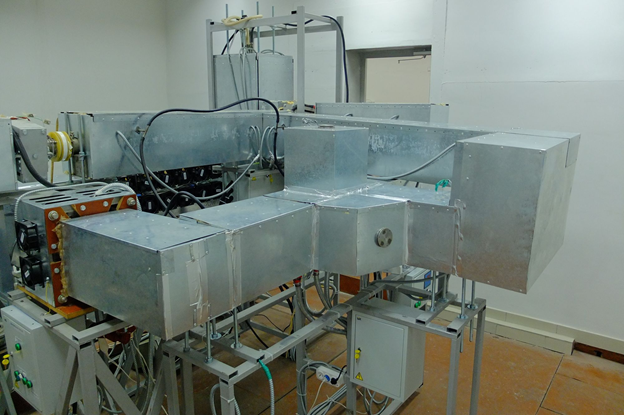The large sodium loop (LSL) of the ICMM UB RAS is an installation for studying non-isothermal processes that occur in intense liquid sodium flows in two branches of the loop. The major advantage of the loop over those widely applied throughout the world is that it allows the user to obtain controlled sodium flows of different temperatures in each branch.
The operating temperature of the liquid metal is between 150 and 300oC and its flow rate ranges from 0.5 до 1.5 liters per second. Even minor changes in the loop design may cause an increase in the flow rate of the melt up to 5 liters per second. At substantial modernization, the flow rate may increase significantly.
The flow in any branch of the loop is generated by travelling-field electromagnetic pumps and its intensity is measured with electromagnetic flowmeters. The loop has an electrical heating system with capacity of 27 kW and an air sodium cooling system with capacity of 30 kW to generate liquid sodium flows of different temperatures. The loop is equipped with a system for storage and dosing of liquid sodium, a system for sodium purification, a ventilation system, a measurement and parameter control system and a thermostabilization and fire extinguishing system.
A series of studies on the mixing of liquid sodium flows of different temperatures in mixers and tees of various configurations was performed using the LSL described here. In these experiments, a hot liquid metal moved through a straight pipe, and a cold liquid metal - through a branch pipe. The nonstationary turbulent mixing of the liquid-metal coolant flows of different temperatures led to the appearance of temperature pulsations in a flow core, but a few "hot" and "cold" sodium vortices reached the internal surface of the pipe, causing temperature pulsations to occur in the metal structure of the tee. The selected thickness of the walls of tees and mixers provided a low thermal inertia, and therefore temperature pulsations on the outer surface of the loop were measured with a thermovision camera. The obtained experimental data were applied to verify the CFD codes during design calculations of power plants with liquid-metal coolants.
The Laboratory is ready to work in close cooperation with any workgroup. Research activities may include both academic and practical studies of processes taking place in liquid sodium flows. The use of the large sodium loop facility makes possible testing the performance of electromagnetic pumps and the behavior of products or equipment in liquid sodium flows. Based on the obtained results, and new models of heat exchangers for liquid-metal coolant can be developed and studied.

Fig.1. Sodium loop LSL with detached temperature-proof housings (ICMM UB RAS)

Fig.2. Sodium loop LSL with detached temperature-proof housings (ICMM UB RAS)

Fig.3. Sodium loop LSL with attached temperature-proof housings (ICMM UB RAS)
Contact information:
Peter Frick,
Ruslan Khalilov,
Ilya Kolesnichenko,
